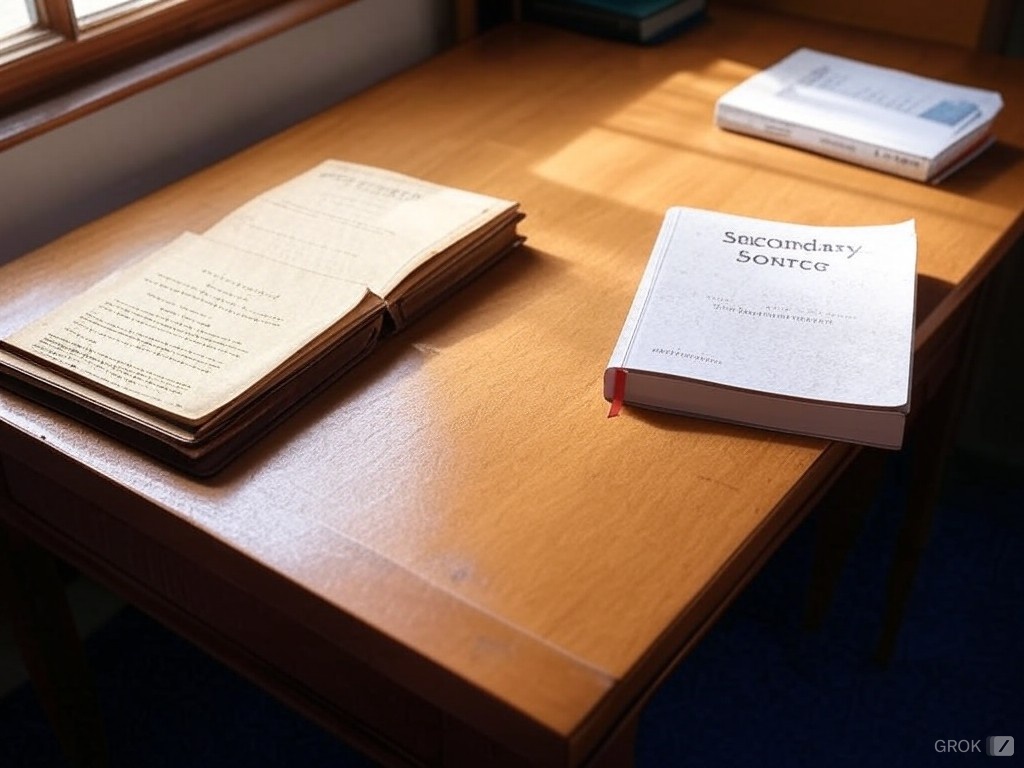Primary vs Secondary Sources: A Comprehensive Guide

Primary vs Secondary Sources: A Comprehensive Guide
Understanding the distinction between primary and secondary sources is fundamental to academic research. Whether you're writing a research paper, thesis, or scholarly article, knowing how to identify, evaluate, and effectively use different types of sources will strengthen your research and academic writing.
This comprehensive guide will explore the characteristics of primary and secondary sources, their roles in research, and how to use them effectively in your academic work. We'll provide clear examples and practical strategies for incorporating both types of sources into your research.
Primary Sources
Original materials or evidence created during the time period being studied or by individuals directly involved in the events.
Secondary Sources
Works that analyze, interpret, or discuss primary sources and events, typically created after the fact by people not directly involved.
Primary Sources
-
Types of Primary Sources
- Personal documents (diaries, letters)
- Official records (government documents)
- Creative works (art, literature)
- Research data (experiments, surveys)
- Media recordings (photographs, videos)
- Artifacts (objects, buildings)
-
Characteristics
- Created during the time period
- First-hand accounts
- Original research
- Direct evidence
- Uninterpreted data
-
Examples by Field
- History: Letters, diaries, newspapers
- Literature: Original manuscripts
- Science: Lab reports, raw data
- Art: Original artworks
- Social Sciences: Interview transcripts
Secondary Sources
-
Types of Secondary Sources
- Academic books
- Journal articles
- Literature reviews
- Textbooks
- Biographies
- Documentaries
-
Characteristics
- Analysis of primary sources
- Interpretation of events
- Synthesis of information
- Critical evaluation
- Historical perspective
-
Examples by Field
- History: History textbooks, biographical studies
- Literature: Literary criticism, book reviews
- Science: Review articles, meta-analyses
- Art: Art history books, exhibition catalogs
- Social Sciences: Theory books, case studies
Source Comparison Example
Topic: Civil War Battle
Primary Source: Soldier's diary entry from the battlefield
Secondary Source: History book analyzing the battle's strategic importance
Evaluating Sources
-
Authority
- Author credentials
- Publisher reputation
- Institutional affiliation
- Peer review status
- Citation frequency
-
Accuracy
- Factual correctness
- Source documentation
- Methodology
- Data verification
- Expert consensus
-
Currency
- Publication date
- Latest edition
- Field developments
- Updated information
- Historical context
-
Purpose
- Intended audience
- Research objectives
- Potential bias
- Academic rigor
- Educational value
Using Sources Effectively
-
Research Strategy
- Start with secondary sources
- Identify key primary sources
- Cross-reference materials
- Document relationships
- Build source networks
-
Integration Methods
- Direct quotations
- Paraphrasing
- Summary
- Synthesis
- Critical analysis
-
Balance Considerations
- Mix source types
- Consider perspectives
- Address contradictions
- Maintain objectivity
- Support arguments
- Verify source authenticity
- Document source relationships
- Maintain proper citations
Frequently Asked Questions
Yes, some sources can function as both primary and secondary sources depending on how they're used. For example, a history textbook is typically a secondary source, but if you're studying how historical events were interpreted in different eras, the textbook becomes a primary source.
Neither type is inherently more valuable; their usefulness depends on your research goals. Primary sources provide direct evidence and original perspectives, while secondary sources offer analysis and context. Most strong research projects use both types effectively.
Primary sources can be found in archives, special collections, museums, and increasingly, digital repositories. Many universities and libraries maintain databases of primary sources. Start by consulting research guides in your field and speaking with librarians specializing in your area of study.
Other Articles You Might Like
How Long Should a Thesis Statement Be?
A thesis statement is the central argument or claim of your essay. It serves as the foundation for your entire piece, guiding the reader through your argument and providing a clear direction for your writing. Yet, many students struggle with crafting a concise and effective thesis statement. In this comprehensive guide, we'll explore how to write a thesis statement in a compelling way, focusing on techniques that align with what Yomu.ai and other academic AI writing tools are designed to help with—making the writing process more streamlined, insightful, and efficient.
AI Writing Assistants for Students: Are They Ethical to Use?
Explore the nuanced ethical considerations of students using AI writing tools, with perspectives from educators, students, and ethics experts on navigating this controversial educational technology.
Is Using an AI Essay Writer Cheating or Smart Delegation?
A nuanced exploration of the ethical gray area surrounding AI writing tools in academia, examining when their use crosses the line from legitimate assistance to academic dishonesty.
Can AI Help You Write a Winning College Essay? Here's the Truth
Discover the real capabilities and limitations of AI for college essay writing, ethical considerations, and how to use AI tools appropriately to strengthen your application.
How to Write an Abstract: Tips and Examples
Master the art of writing effective abstracts for research papers, theses, and academic articles. This comprehensive guide covers essential components, best practices, and expert tips for crafting compelling abstracts.
Could an AI Essay Writer Write a Better Constitution Than Humans?
A thought-provoking exploration of whether artificial intelligence could draft more effective constitutions than human lawmakers, examining the strengths and limitations of AI in constitutional design and the essential human elements that shape foundational governance documents.
